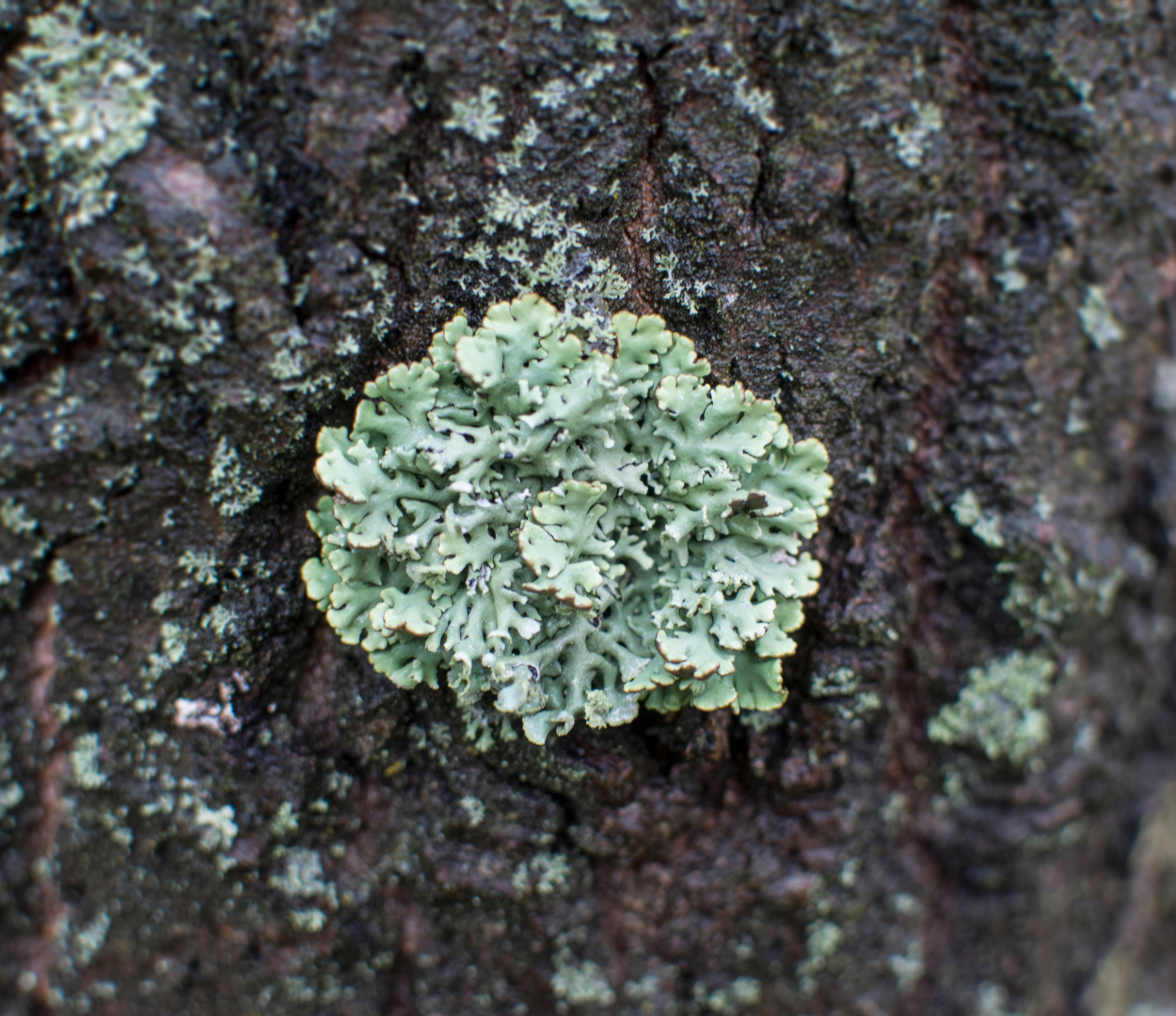Back to main Blog
Terra Penn
Lichens are unique and fascinating organisms that can be observed growing on the bark of trees, adding a touch of magic to the natural landscape. These symbiotic beings are often mistaken for moss or mold, but they are indeed a combination of fungi and algae, or fungi and cyanobacteria.
When examining lichens on trees, one will notice their diverse forms and colors. From crust-like patches to leafy structures, lichens come in a wide range of shapes. They can be gray, green, yellow, or even vibrant orange. These visual characteristics make lichens a breathtaking sight, giving an ethereal touch to the tree trunks they call home. Lichens are found more often in humid areas of the country or in forest settings where there is more shade.

The formation of lichens is a fascinating process that involves a mutualistic relationship between fungi and algae or cyanobacteria. The fungi provide a protective structure and absorb nutrients from the environment, while the photosynthetic partner supplies the lichen with sugars through photosynthesis. This partnership allows lichens to survive in various habitats, including the forest on trees.
Lichens play an essential role in ecosystem health. They contribute to nutrient cycling, nitrogen fixing, and soil stabilization. Moreover, lichens serve as indicators of air quality, as they are extremely sensitive to pollutants such as sulfur dioxide and heavy metals. The presence or absence of lichens on trees can provide valuable information about the environmental conditions in a given area.

Do people need to do anything about lichens on trees? The answer is no… for the most part. Lichens are harmless to trees and do not cause any harm to their hosts. In fact, lichens benefit trees by providing shade and reducing water loss through evaporation. Their presence enhances the overall biodiversity of the ecosystem.
However, in certain cases, the abundance of lichens on trees can be a sign of stress or imbalance. For example, if a tree has a lot of lichens, there may be damage or underlying issues in the tree that has created rot or something on the tree. In such cases, it is important to address the underlying environmental issues rather than removing the lichens themselves.

Lichens can be removed from trees by spraying a copper fungicide on them, even though they don’t harm the tree at all. Some people simply don’t like the look on their tree. Moon Valley Nurseries can remove lichens if requested, but we wanted to make this blog so people are aware that they don’t harm the plants or anyone else.
Lichens on trees add a touch of natural beauty and intrigue to our surroundings. Their diverse forms and colors make them a captivating sight, while their symbiotic lifestyles contribute to ecosystem health. Understanding their formation and role in the environment allows us to cherish their presence and take appropriate actions when necessary. So next time you encounter lichens on trees, take a moment to appreciate these wondrous organisms; they are nature's artwork and an indicator of our planet's well-being.
Submit a Comment